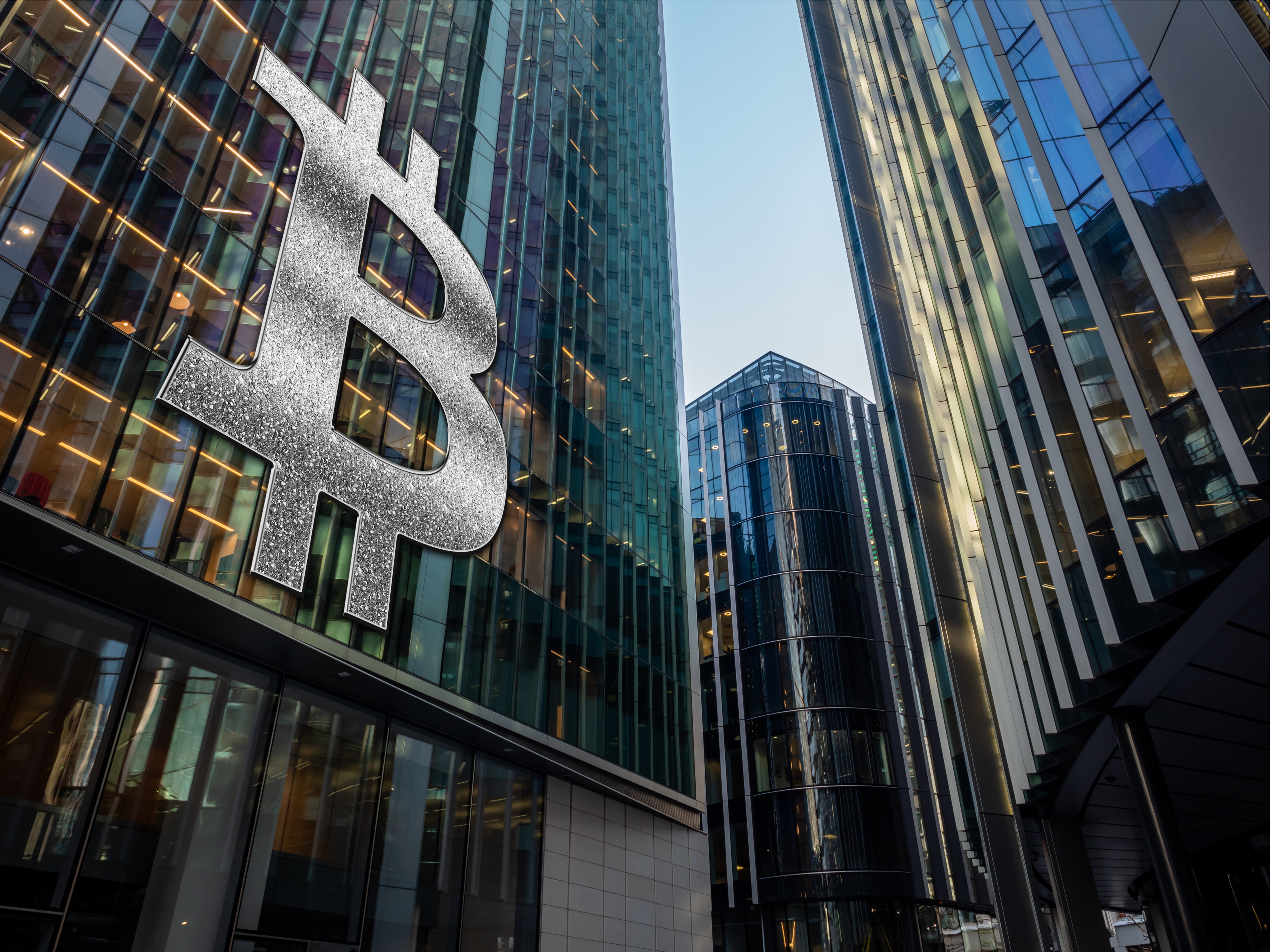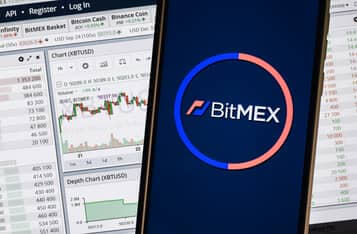The Crypto Boom: Why it’s Not 2017 Déjà Vu
Those who don’t remember the past are bound to repeat it.
But for those who think the explosive rise in Bitcoin and digital currencies may just be another repeat of 2017, you’re barking up the wrong tree.
The dramatic changes in the fiscal landscape, as well as sentiment toward digital currencies, is not only real, it’s challenging the fiat world in a way that could only be imagined three years ago. It's a shift that investors, traders, and consumers are feeling as the market capitalization of cryptocurrencies has topped $1 Trillion US.
But the rapid rise of Bitcoin and other altcoin prices has raised some red flags, especially for those who are aware of what happened in 2017.
“Bears have long said bitcoin is in bubble territory, comparing the recent rally to what played out in 2017, when bitcoin plunged by 45% shortly after reaching highs,” Markets Insider recently reported.
To put 2017 into context, Bitcoin’s price jumped from under $1,000 in January to more than $20,000 in December, only to fall by 65% during January and February 2018.
To find out what was driving the price of BTC during the 2017 Bitcoin Bubble, University of Texas finance professor John Griffin and colleagues examined millions of transactions recorded in 2017 and found a possible explanation.
In a 66-page paper, the authors found that Tether was used to buy bitcoin at key moments when it was declining, which helped “stabilize and manipulate” the cryptocurrency’s price.
“Fraud and manipulation often leave footprints in the data and it’s nice to have the blockchain to track things,” Griffin told CNBC.
Griffin pointed to one “whale” or BTC investor who would prop up the price of the coin when it went into a downturn. Tether officials disputed the account of the price rise.
While there may never be a definitive explanation for what happened in 2017, it’s time to move on from that scenario as cryptocurrencies have clearly entered a new era. The changes are fueled by several market forces that are shaping the way Bitcoin and all cryptocurrencies have entered an entirely new phase.
The adoption of Bitcoin by institutional investors.
For those who followed the digital currency markets in 2020, they were aware that several organizations had been buying up Bitcoin as part of their investment portfolios. MicroStrategy, Grayscale Investments, and Square, to name a few were just some of the companies that announced their Bitcoin positions in 2020. While the news was heralded in the crypto social media world, it was barely mentioned by the mainstream.
But then, in January, that all changed when Elon Musk announced that Tesla had purchased $1.5 Billion in Bitcoin and expected to start accepting the coin as payment for its vehicles. Musk changed his Twitter profile to #bitcoin around the same time. The move was extremely profitable for Tesla.
“Tesla’s recent revelation that it put $1.5 billion of its cash into Bitcoin sparked a flurry of conversation on Wall Street about both the wisdom of the move and what it meant for Bitcoin as a legitimate asset,” Barron’s reported. “While analysts and investors were debating, Elon Musk’s company made a cool billion on the trade.”
The move was also profitable for Bitcoin investors as the price of the coin skyrocketed to an all-time high after the announcement. Since then, Musk’s musings on Bitcoin are having a direct impact on the coin’s price. Witness this week, when BTC plummeted 10% after Musk reportedly said the price was too high.
Why the sudden surge in investor interest? “The virus crisis is propagating the reassessment of bitcoin,” said Nikolaos Panigirtzoglou, an analyst at JPMorgan said as BTC started its surge in 4Q 2020. “There is a reassessment about its value here as an alternative currency; as an alternative to gold.”
The changing view of regulators toward crypto.
There’s been a change among international regulators toward the crypto industry. A change that is long overdue.
“The basic, overarching issue is that digital asset innovation has outpaced our regulatory framework,” said Timothy Massad of Harvard, who is formerly the chairman of the Commodity Futures Trading Commission said in a New York Times interview. “That’s not unusual. There’s always a tension between innovation and regulation.”
This shift in attitude toward digital currencies was most evident in the European Union during 2020 with the development of its MICA regulations. MiCA – “Markets in Crypto Assets Regulation” – which was proposed last September, received many favorable comments from members of the EU and industry organizations.
“MiCA represents a monumental moment of change for the DLT & blockchain industry globally," commented the International Association for Trusted Blockchain Applications, which facilities the dialogue between developers and users of DLT with regulators and policymakers.
In the United States, key financial and regulatory agency heads also are signaling a more favorable stance toward crypto. Security and Exchange Commission Commissioner Hester Peirce has publicly stated that crypto regulation should be “focused on innovation.”
“We really need to embrace innovation, and figure out how we can set up a regulatory environment that’s conducive to innovation, which I think in our space means providing clarity,” Peirce, who is known as the “Crypto Mom,” said at a conference in January.
The pending appointment of Gary Gensler as chairman of the SEC is also seen as a positive sign for the digital currency world. While he is expected to assume the role of a tough guy with Wall Street, Gensler a former chairman of the Commodity Future Trading Commission, is extremely knowledgeable about digital currencies. He has testified on digital technologies before Congress and taught blockchain and digital technologies at the prestigious M.I.T. Sloan School of Management. The combination of Peirce and Gensler should help advance the acceptance of digital currencies into mainstream markets.
As regulators move toward establishing a friendlier framework toward digital currencies, consumer confidence will grow as they recognize those exchanges that comply with regulatory requirements versus those that do not. For example, at STEX, we meet all of the regulatory requirements of our home Republic of Estonia, as well as the EU’s AML (Anti-Money Laundering) standards, and the US Financial Crimes Enforcement Network (FinCEN). When consumers see these regulatory credentials displayed on an exchange, they can confidently manage their transactions without fear of losing their assets.
The growing public interest and acceptance of virtual payments.
It took a global pandemic for people around the world to discover the ease convenience and security of digital-ledger-based payments. As contact-less payments became a health necessity, people are gaining comfort with the idea of virtual payments, which became the norm rather than the rule in 2020.
The increased coverage of Bitcoin in the mainstream media has also fueled the awareness and interest by consumers in digital currencies. Musk’s actions and comments over the past few months have catapulted Bitcoin into the international news cycle, which has contributed to the change.
This window of opportunity appears to be wide open, as evidenced by a recent survey of more than 30,000 Americans who appear to be bullish on crypto.
More than 50% of the respondents said they believe it is safe to invest in crypto, and 57% said American brands should start accepting crypto as payments. The survey, by Piplsay (a global consumer research platform), also showed that respondents felt investing in crypto and the traditional stock markets were equally risky.
"The crypto bull run has seized the attention of millions of people who previously had never considered digital currencies like Bitcoin to be an alternative asset," said Pavel Matveev, CEO of Wirex, a digital payments platform, to Markets Insider.
Part of the challenge in moving consumers from thinking about incorporating digital currencies into their financial transactions to actually engaging in the sector will be in supporting them with education about how to use, transact and manage their virtual assets.
Traders who sign on to the STEX platform are able to walk step-by-step through the registration process and conduct their trades with a few swipes on their mobile phones. They can purchase Bitcoin with the touch of one button and have options on how to set up their digital wallets to receive notifications. Clear interfaces make it easier for consumers to move away from fiat and onto crypto.
So now that digital currencies have captured the full attention of regulators, investors and mainstream consumers, it’s time to put to rest the idea that 2021 is 2017 all over again. Yes, digital currencies will rise and fall, just like fiat securities do. That’s just part of the risk/reward of managing assets. But crypto has too much momentum to reach back to 2017 and say its déjà vu all over again. It’s in new territory now. It’s time to move forward on a global scale to bring the benefits of digital coins to a more mature market where all can use and benefit from not just Bitcoin, but the thousands of altcoins that are driving innovation in our payments systems.
Author: Vadym Kurylovych, founder of STEX cryptocurrency exchange
Image source: Shutterstock
Disclaimer : The views and opinions expressed in this article are those of the contributor and Blockchain.News does not endorse and is not responsible or liable for any content, accuracy, quality, advertising, products or other materials on this page. Readers should conduct their own research before taking any actions related to this company. Blockchain.News is not responsible, directly, or indirectly, for any damage or loss caused or alleged to be caused by or connected with the use of or reliance on any content, goods or services mentioned in this article.





